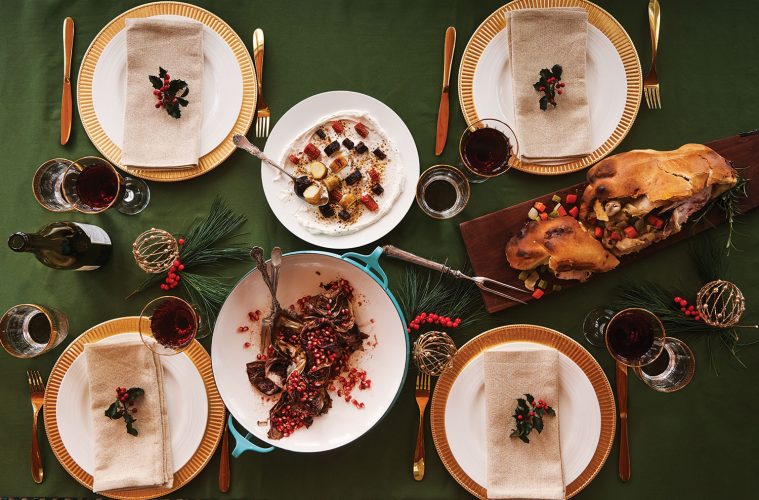Some people knit or fold laundry while binge-watching TV. Barbara Lynch rolls strozzapreti, a short twisted pasta, while catching up on the FX show The Americans. “The name means ‘priest strangler’—really!” the acclaimed Boston chef says of the ropey pasta, before tucking a baggie full of it back in the freezer and pulling out a pig bladder (the word bladder written on it in Sharpie) in preparation for some later experimentation.
The fridge in Lynch’s Gloucester home holds few other surprises; she notes multiple bottles of ketchup, left over from too many summer houseguests, and Cain’s mayonnaise, a staple of her youth and still a favorite in tuna sandwiches. She moved into her cozy French provincial home nearly three years ago after purchasing it from the Tufts family, who had it built in 1920. After seeing its warm woodwork, no visible neighbors, and two dishwashers, Lynch knew within five minutes that she wanted the property—five acres tucked into a hillside up a dirt road, abutting 27 acres of conservation land. “It’s a long way from the projects,” says Lynch with her well-known candor, referring to her South Boston childhood living next door to the late Whitey Bolger. “It’s more land than I ever thought I’d have.”
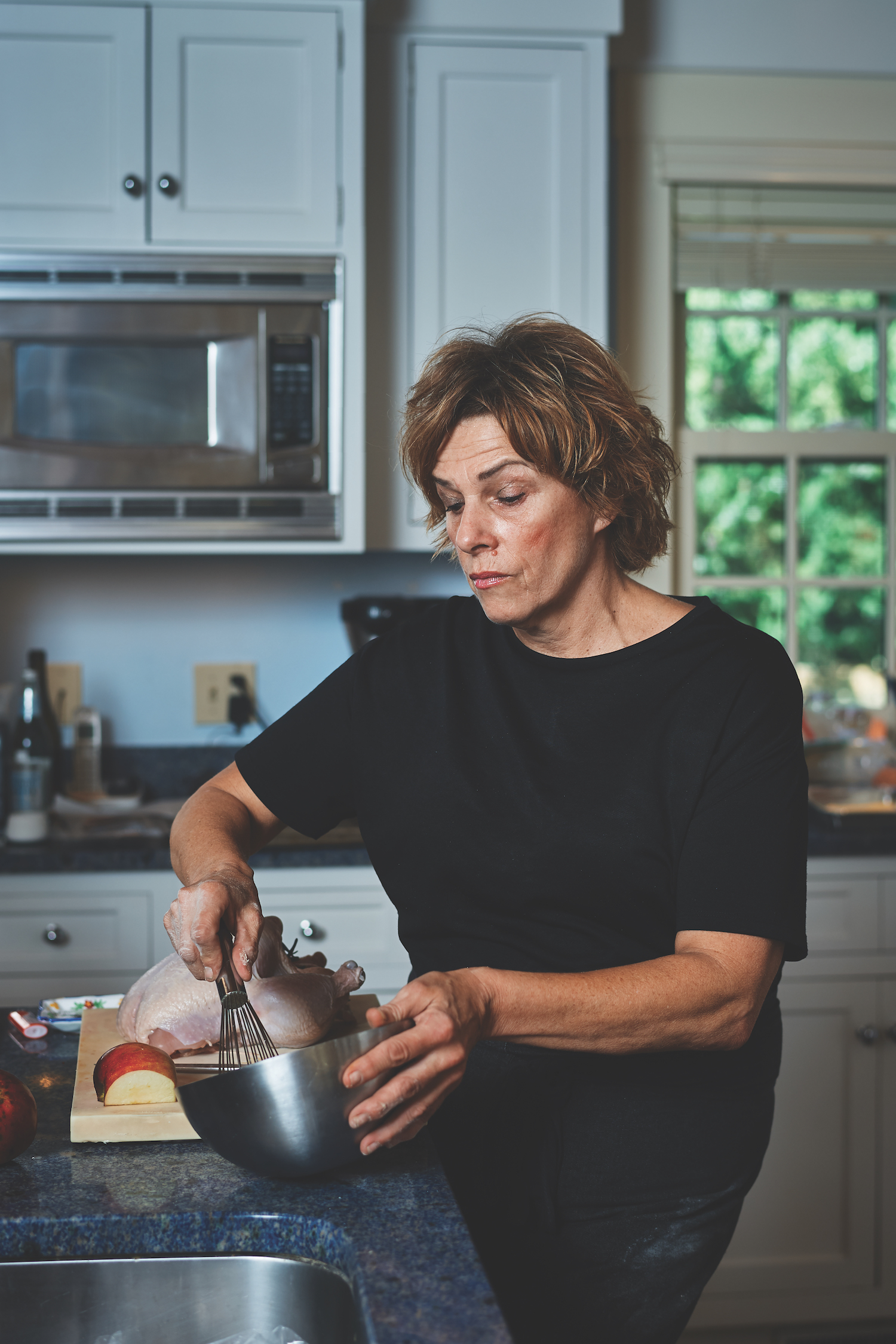
Ambition, grit, and a whole lot of talent brought Lynch to this place. Growing up with six brothers and sisters and her widowed mom, she was ridiculed for her attempts at “fancy food” like pesto. These days, no one is questioning her simply elegant style. The chef is celebrating the 20th anniversary of the first restaurant in her Boston empire—the consistently acclaimed No. 9 Park. The very fancy Menton earned four stars from the Boston Globe and is the only Relais & Chateaux property in Boston. Other restaurants include B&G Oysters, Sportello, Drink, and Stir, Lynch’s intimate demonstration kitchen and cookbook store.
Last year, after the publication of her fiercely honest, funny, and wholly compelling memoir Out of Line: A Life of Playing with Fire, Lynch was named to the TIME 100, Time magazine’s annual list of the world’s most influential people.
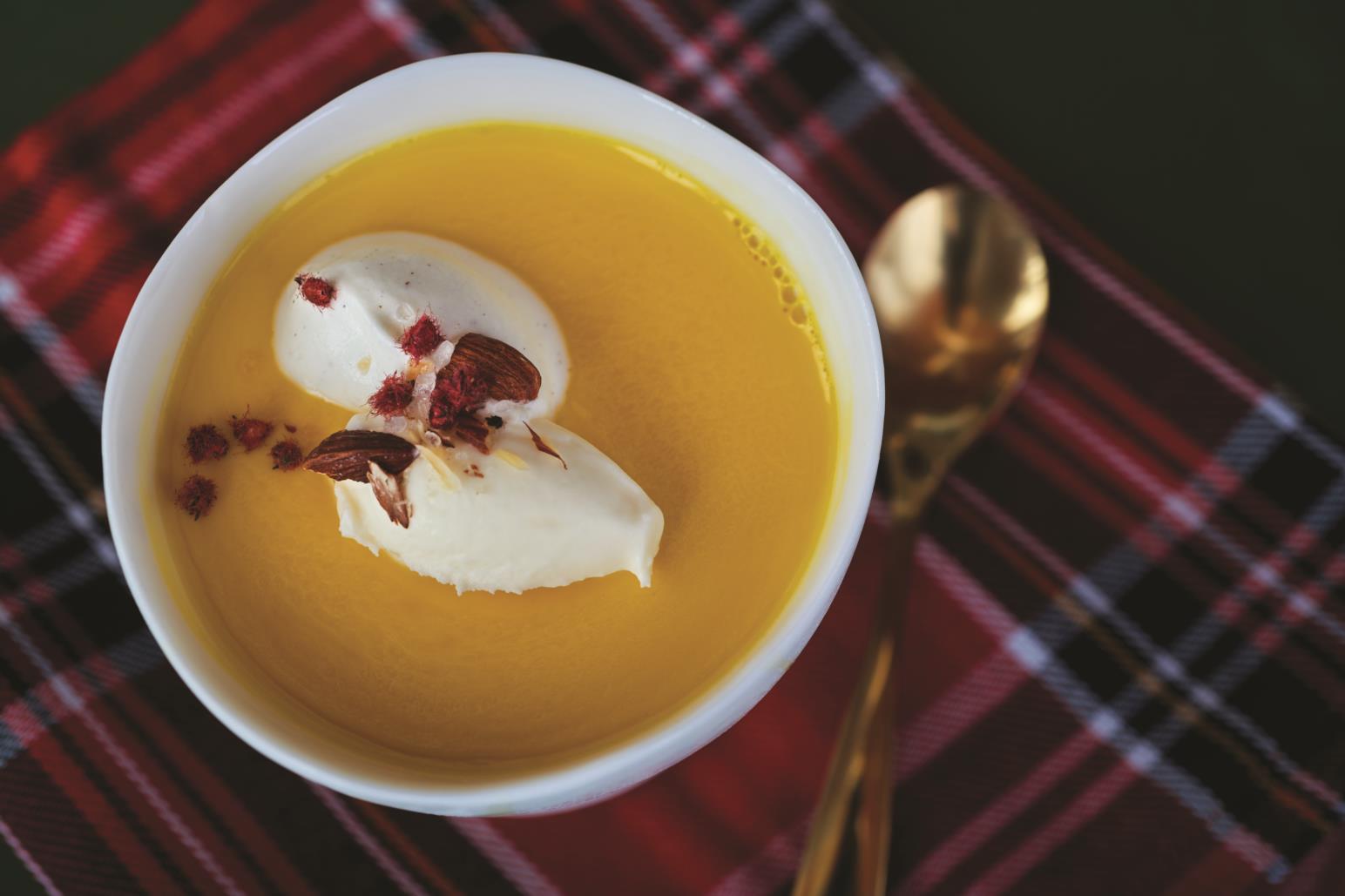
The chef’s Gloucester retreat might represent her desire to turn down the heat—just a bit. She’s taken up painting and sculpture; tiny models of people she’s met sit on a shelf in her comfortable, stylish living room, and an alcove in her three-season sun porch is a mosaic of her colorful paintings, from nudes to farm stands and chickens.
The home has also become a magnet for guests and entertaining, especially at the holidays. “Thanksgiving is cuckoo,” Lynch says, noting that she had about 50 people for a classic spread last year, including two turkeys stuffed with her mom’s recipe: Pepperidge Farm bread with Bell’s Seasoning and a “load of butter.”
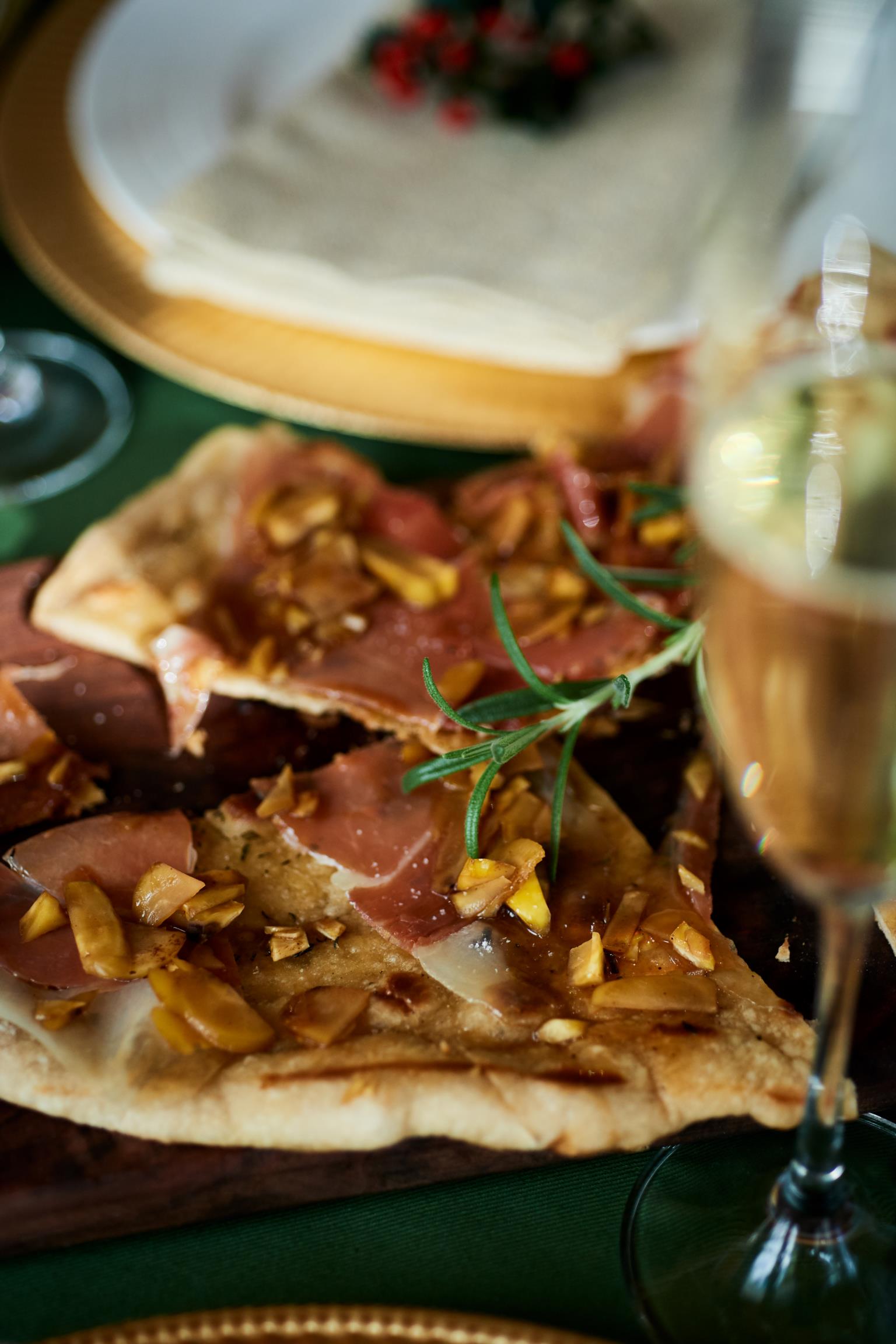
Christmas isn’t much less crazy; last year she fed about 30 people. “I forgot who I invited,” Lynch says with a laugh. “We were opening gifts, then rewrapping them to give to other people.” Her nephew strung up twinkle lights in the garden, and the menu included chicken Parmesan—her daughter Marchesa’s favorite—and ricotta ravioli.
Chicken parm and twinkle lights will not be on the menu for the holidays at No. 9 Park, but it’s still pretty special. In addition to dinner service, the restaurant opens for lunch from November 26 to December 21, with a menu that includes luxe offerings like roast goose for two, a French onion soup redolent of braised oxtail, and seared foie gras, with a toffee bûche de Noël for dessert.
When celebrating at home, Lynch prefers more intimate dinner parties with simple, beautiful food that can be mostly done in advance. “Don’t slave. Just don’t slave,” she advises. “Get the shopping done two days ahead and you’re golden.”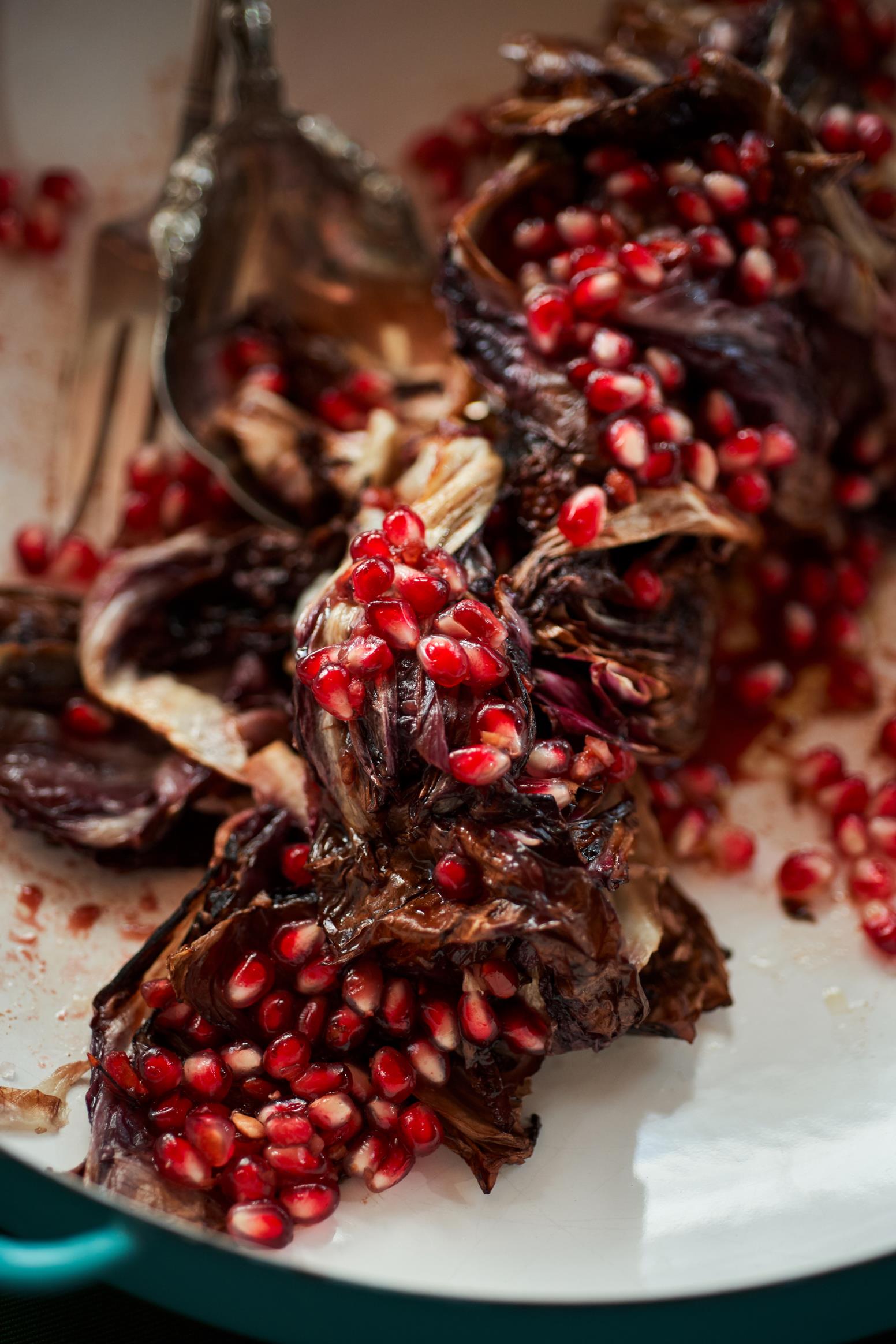
Want to impress your guests? Bake the focaccia studded with vin santo–soaked chestnuts and speck that Lynch learned how to make decades ago on her first trip to Italy. “Focaccia is my favorite dish,” Lynch says, still reveling in the memory of Mita Antolini, the woman who taught her to make it, entering the kitchen with an apron full of chestnuts. “I didn’t speak a word of Italian,” she recalls.
Just as her restaurants show a mix of Italian and French techniques, a dinner party is likely to draw from both countries. A favorite main course is poulet au pain—chicken roasted inside a crisp bread crust. The brilliance of this dish is that the chicken comes out of the oven up to two hours before serving, because it continues cooking inside its bread casing. Served with a festive grilled radicchio salad, it makes for an elegant table, but everything can be prepared before the guests even arrive. “It’s not fussy,” Lynch says. “It’s just food you want to eat.”
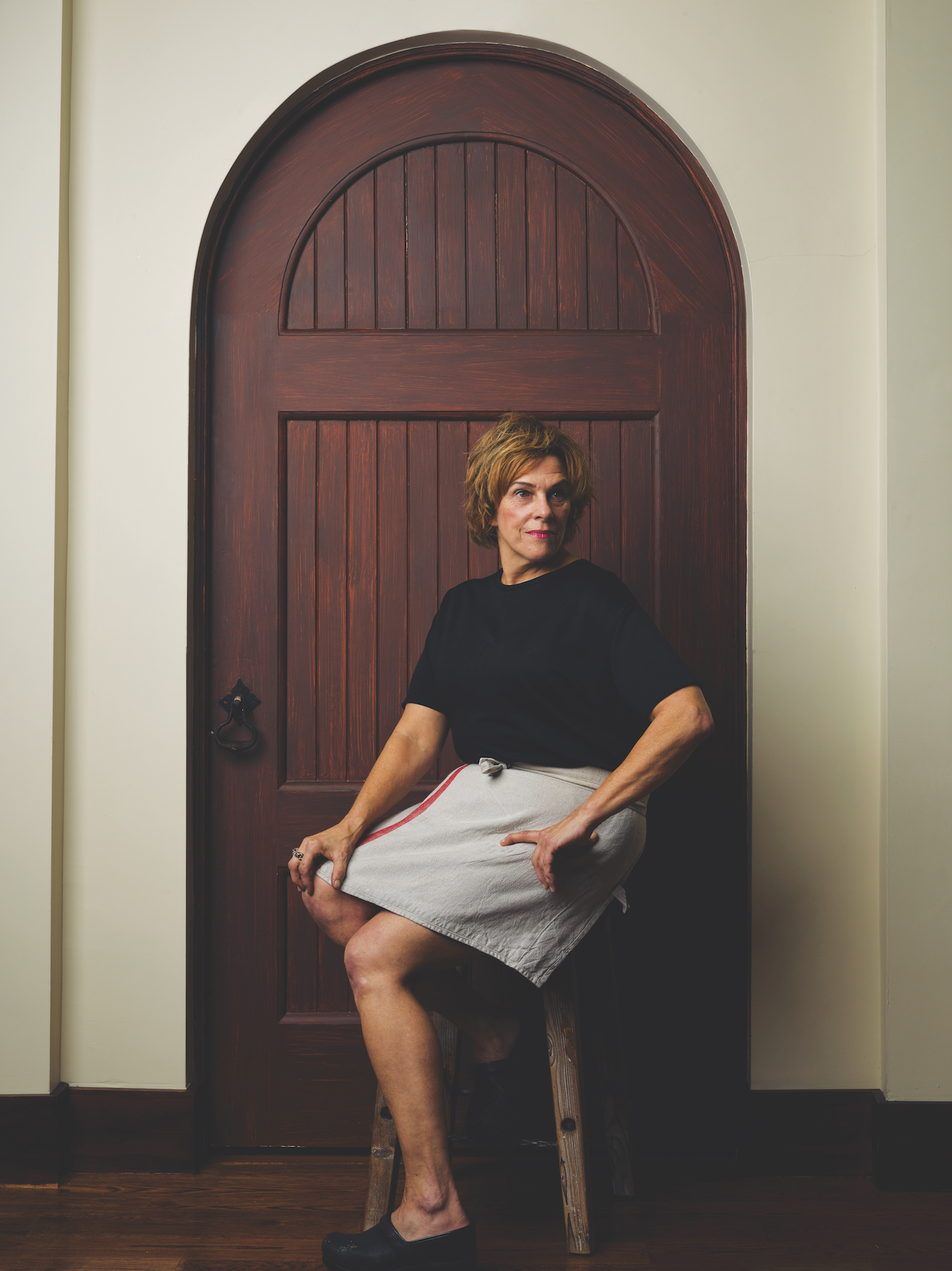
Her large FiveStar range at home is getting quite a workout, but Lynch has yet to put her stamp on the kitchen. While she’s still thinking through what changes she’d like to make, she’s feeling rooted in the community. The chef spends at least several nights a week here, splitting her time with a place in Boston, while Marchesa moves between Winchester, where she lives with her dad, and Gloucester. The city’s mix of working-class waterfront, artist colony, and upscale shopping and dining suit Lynch’s own style. “I like the people around here,” Lynch says. “They are real. They’ll help you out if you need it, but are also kind of private, too, which I appreciate.”
In season, Lynch is often in a rush to hit The Market restaurant in Annisquam for dinner (when she’s bored on vacation, she might even pull a shift in the kitchen). Year round, you might find her picking up provisions at Pastaio via Corta or Common Crow, where she finds everything from quail eggs to Irish moss and vitamins. Sometimes she stops into Turner’s Seafood—“after 2 p.m., when the local fish comes in,” she says. Aprons, which she has in good supply, tablecloths, and even the drapes at No. 9 Park come from Good Linens Studio, right on Main Street. “It’s so nice to have [owner JoAnne Chirico] up here,” Lynch says. “She’s an amazing talent and sells stuff I need. Not just more vintage-y antiques.”
These days, Gloucester seems like a comfortable escape for a chef at the top of her game, where she can light a fire in her fireplace, work a sculpture, or just roll out some priest stranglers.
Dinner for Four
Northshore asked Barbara Lynch to put together a menu for an intimate holiday celebration. So invite a couple of friends, crack open a bottle of bubbly, and enjoy. Start with baked tomatoes and cheese, which looks beautiful with stems on the tomatoes. Serve it with black olive “crackers,” or with Lynch’s favorite focaccia—a light meal in itself with a hearty salad. Follow that with poulet au pain and a beautiful seasonal radicchio salad, along with slow-roasted carrots. For dessert, serve a light, indulgent saffron panna cotta.
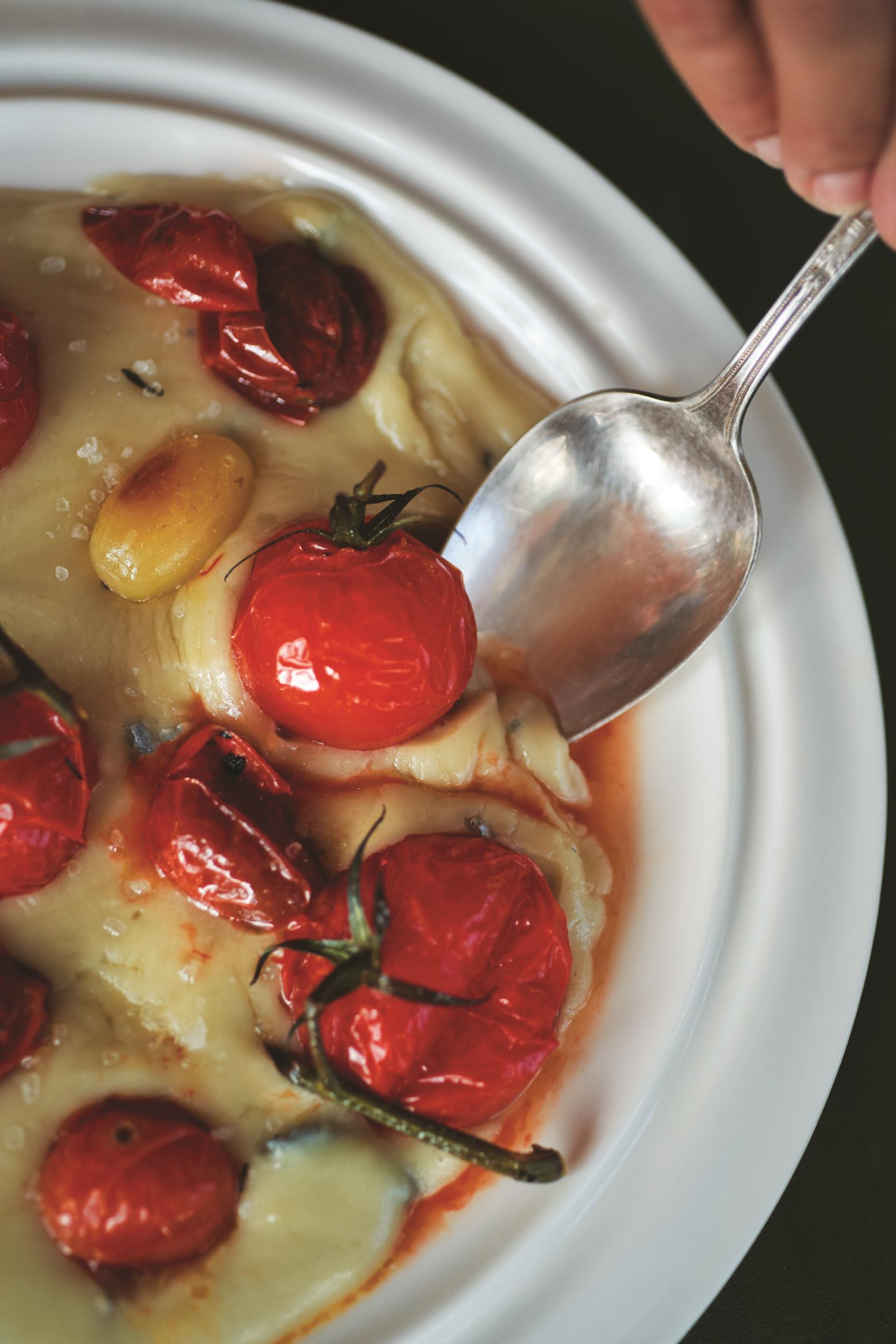
Baked Tomatoes and Cheese
Serves 4
I especially like Humboldt Fog goat cheese for this rustic dish, but just about whatever cheese you have on hand (well, not American) will work, including a mix of cheeses. In fact, I always make this after a party; it’s a delicious and practical way to use up all those bits of cheese leftover on the cheese board.
The tomatoes look prettier without their skin and are nicer to eat, but you can leave the skin on if you don’t feel like peeling them. If there are vines on the tomatoes, leave them attached; they look cool rising up from the cheese. The “crackers” here are really bread sliced thin and crisped to become cracker-like. You can make your own olive paste (recipe follows), which takes about a minute, or use your own favorite jarred olive paste or tapenade. Serve the tomatoes from a single baking dish, with the crackers nearby to dip.
Ingredients
12 Medium Tomatoes, preferably heirloom, or 48 cherry tomatoes, preferably with some of their vine still attached
Kosher salt and freshly ground black pepper
3 Tbsp. Extra virgin olive oil, plus more for the “crackers”
9 oz. Cheese, cut into pieces
2 to 3 Tbsp. Heavy cream (if needed; see notes)
1/2 loaf Ciabatta or other rustic bread, sliced as thin as possible
2 to 3 Tbsp. Black olive paste (recipe follows) or good-quality
Fleur de sel
Purchased tapenade
Pinch of sugar, if needed
Directions
1. To peel the tomatoes, cut an X into the bottom of the tomato with a small paring knife. Bring a saucepan of salted water to a boil and have a bowl of ice water nearby. Put the tomatoes in the boiling water for about 30 seconds, or until the skins begin to pucker, and then immediately plunge them into the ice water. The skins will peel off easily and may be discarded or fried up as a garnish.
2. Heat the oven to 325°F. Put the tomatoes on a small baking sheet with edges. Drizzle the olive oil over the tomatoes and season them with salt and pepper and a pinch of sugar if the tomatoes are not very sweet. Bake until the tomatoes begin to soften, about 12 minutes for medium tomatoes and 8 minutes for cherry tomatoes.
3. Meanwhile, crumble the cheese into a medium baking dish suitable for presentation. Put the tomatoes on top of the cheese. Bake until the cheese is melted, 5 to 8 minutes. Sprinkle the tomatoes with a little fleur de sel and some pepper.
4. For the black olive “crackers,” heat the oven to 375°F. Brush the bread slices with a little olive oil and bake on a sheet pan, turning once, until crisp and golden brown on both sides. Let them cool briefly, spread on some black olive paste, and serve with the warm baked tomatoes.
Notes:
If you’re using an aged, hard, or more dense cheese, you may need to add some cream to the pan to help the cheese melt into a spreadable consistency.
You can bake the tomatoes (without the cheese) up to a couple days ahead. Store in an airtight container in the refrigerator until you’re ready to use them.
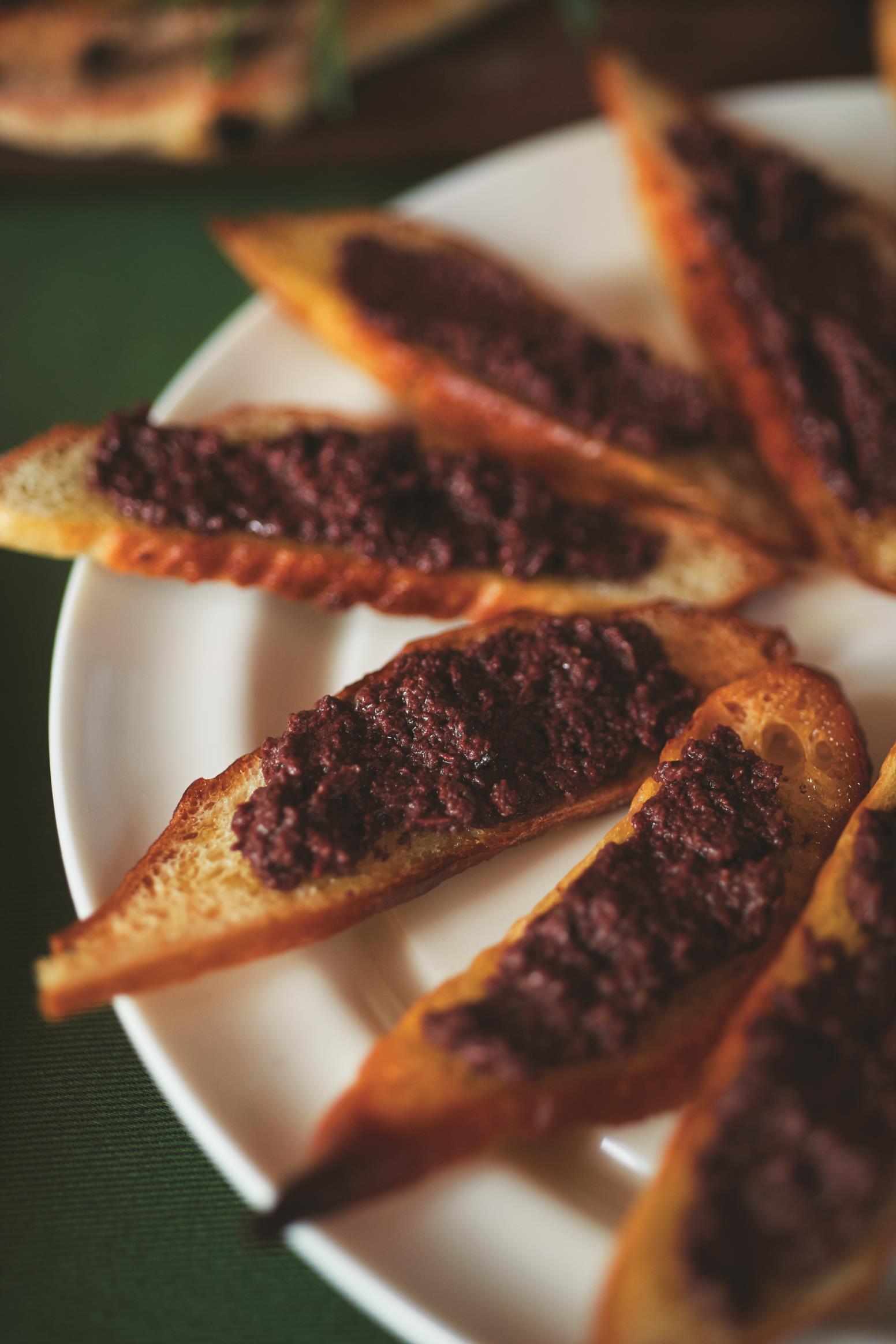
Black Olive Paste
Yields 1 cup
Ingredients
1 cup Pitted black olives, such as kalamata or niçoise
1/4 cup Extra-virgin olive oil
Directions
1. Combine the olives and olive oil in a small food processor or in a blender. Process on high until puréed, 1 to 2 minutes.
2. This will keep in the refrigerator for up to a month, stored in an airtight container with a thin layer of olive oil on top…but mine is always devoured long before that.

